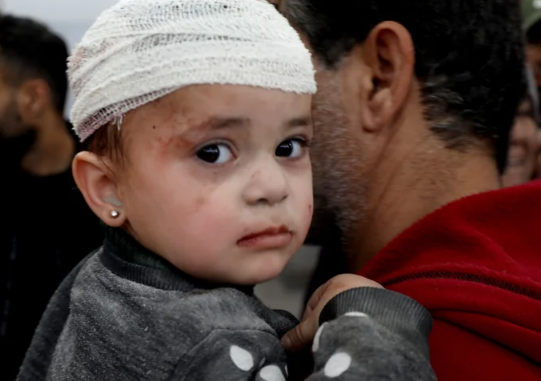
Introduction
In this comparative analysis, I will compare two articles about the Israeli-Palestinian conflict, which were taken from BBC and Huffington Post. The analysis begins with a short biography of both news media, followed by an analysis of the content production, online delivery, and techniques employed in each story to ascertain the effectiveness of the content. The analysis findings will be used to determine which of these two articles is a more effective work of journalism.
News story 1: Why has Israel bombed Gaza and what next for ceasefire deal? (BBC)
BBC, originally the British Broadcasting Company, is the world’s leading public service broadcaster; it was established on 18th October 1922 by a group of leading wireless manufacturers and evolved in BBC in 1927 under a Royal Charter. In February 2025, BBC received 646.16M visits with an average session duration of 06.32 mins.
BBC is headquartered at the Broadcasting House in London and has over 21,000 employees. It operates globally, with a weekly news audience reaching over 74 million in over 200 countries and territories. The journalistic standards are maintained by a diverse team of professionals from within the UK and worldwide.
BBC is committed to “act in the public interest, serving all audiences through the provision of impartial, high-quality and distinctive output and services which inform, educate and entertain”. Apart from intending to provide impartial news and information to people around the world, it aims to reflect the cultures and values of the UK to the world.
The readers of BBC primarily include the general public, policymakers and government officials, academics and researchers, business professionals and executives, international organisations, and media and journalism professionals.
As per statistics from Similarweb (2025), the worldwide demographic for the last 3 months includes 56.81% male and 43.19% female. The largest visitor group is 25-34 years old, with 24.23%, followed by 35-44 years, at 20.80%. The primary audience comes from the United States and the United Kingdom.

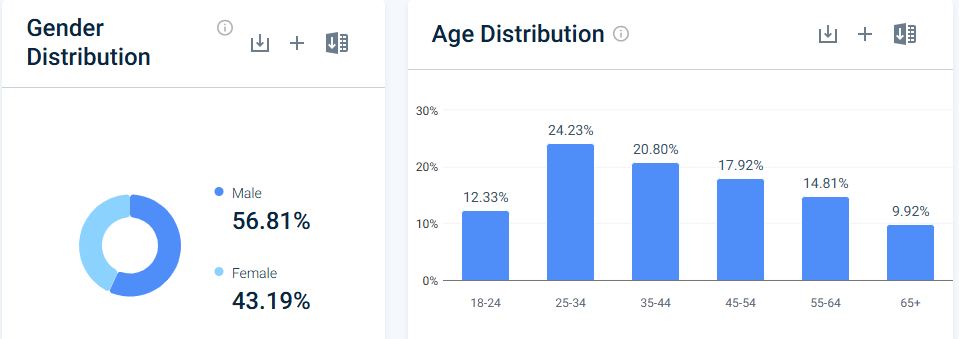
Journalistic Content
![]()
The story is from the category of articles related to the conflicts between Israel and Palestine. The heading accurately describes the focus of the news piece with limited words, ensuring the article follows the structure of covering the heading in two parts.
The journalist focuses on the consequences of the military action but also maintains a forward-looking approach by addressing diplomatic issues. There is the use of formal, restrained, yet analytical language. Words like “airstrikes,” “conflict,” and “casualties” maintain a factual tone. The article presents multiple perspectives, avoiding overt emotional language.
This is a 1000+ words article, which is relatively long, but the author has inserted bold sub-headings to help the readers navigate through the article.
While the BBC article is well-structured and informative, there are areas where it could improve in terms of depth, interactivity, and accessibility. Unlike other media outlets, BBC does not include call for action, but presents neutral, fact-based reporting style.

Hypertextuality
No hyperlinks are used in the key text of the article, especially the visuals. The source has been cited, and no link has been given to the readers to ensure the authenticity of the content. It is important that some sources or data is linked to the article, such as “Israeli fighter jets unleashed a wave of bombardment across the Gaza Strip through the night,” “The 19 January ceasefire deal was thrashed out over many months”, and “In Qatar last week, Israeli and Hamas delegations gathered to negotiate” etc.
Multimedia
Two images have been used in the article to draw attention towards Israelis and Gazans fleeing their homes due to war. However, the images only add little interest to the storyline and do not make a lasting impact on the readers due to the lack of visual appeal.
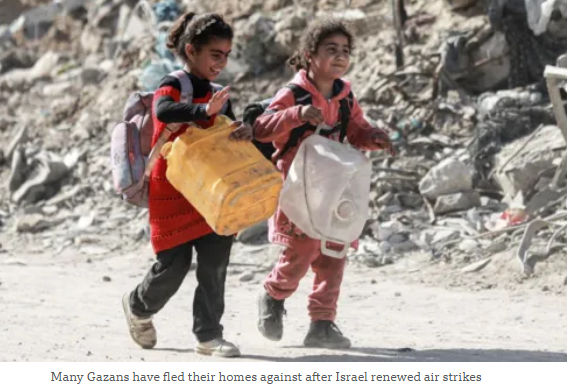
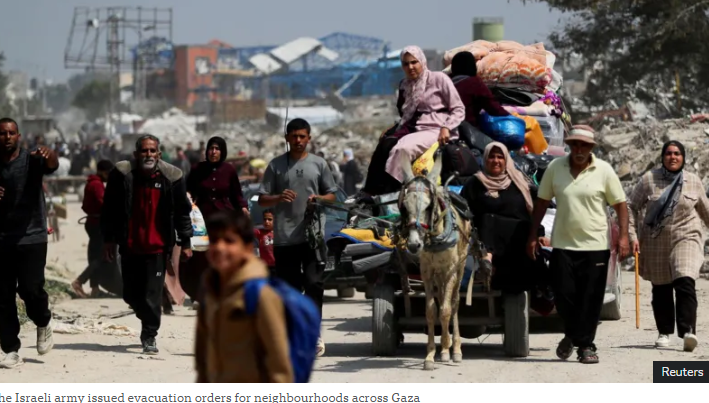
Online Delivery
The new piece follows its headline and categorises it into two sections, first focusing on “Why has Israel bombed Gaza” and second “, What happened to ceasefire talks?;” However, it lacks interactivity with the readers (Bradshaw & Rohumaa, 2017). Rosenblatt (2020) says journalism needs to be open to two-way communication and allow the audiences to talk to the journalist directly, considering that online engagement shapes the perception and views of the audiences. BBC has not enabled the comments option, which limits the impact of the article (Bradshaw & Rohumaa, 2017). However, considering the sensitivity of the issue, it can be challenging for popular outlets like BBC to control the moderation of hate speech, misinformation, and inflammatory remarks. As such, it must have taken this step to avoid becoming a platform for propaganda or polarisation in ongoing debates.
While the author’s name has been given, there is no option to click on the same to get more information about the author and the previous works that have been done. This further limits the openness and interactivity between the readers and the journalists.
One of the key user-integrated features is the option of sharing news articles through Twitter, Facebook, email, and LinkedIn. Additionally, users with BBC accounts can save the article for future reference.

Technical Delivery
The overall webpage layout is simple and clean, with clear categorisation of news articles, making the webpage navigation easier for the readers.
There are some hyperlinks to similar articles on the theme are included between and at the end of the article, which cuts down the precise flow of the article. However, additional columns like “Related” and “More” have been arranged neatly at the end of the article.


The top left pane of the webpage allows readers easier viewability and accessibility, with a search bar to enter keywords and locate the desired article. At the bottom of the webpage, language change options that are friendly for readers from other countries have been provided. Once the article is read, the readers need to re-scroll the mouse to return to the top of the page.
News story 2: ‘The Bodies Were Everywhere’: Doctors In Gaza Recount The Night Israel Killed Hundreds (Huffpost)
HuffPost (called as HuffingPost) is an American liberal news website and political blog founded in 2005 by Arianna Huffington, Andrew Breitbart, Kenneth Lerer, and Jonah Peretti. HuffPost takes pride in publishing articles based on the interests of its readers and the topics that matter to them. HuffPost is headquartered in New York, the United States, with newsrooms and editions in 15 countries. As of 2021, it had 350 employees in the U.S. Huffington Post has a collection of more than 3,000 bloggers who write 300 posts a day and has between 12 million and 20 million unique monthly visitors (UNC, 2020).
The primary readership of HuffPost comes from the United States with 86.03% followed by 4.60% from Canada. 48.31% of readers are male and 51.69% female, with 55-54 years old forming the major group of readers.
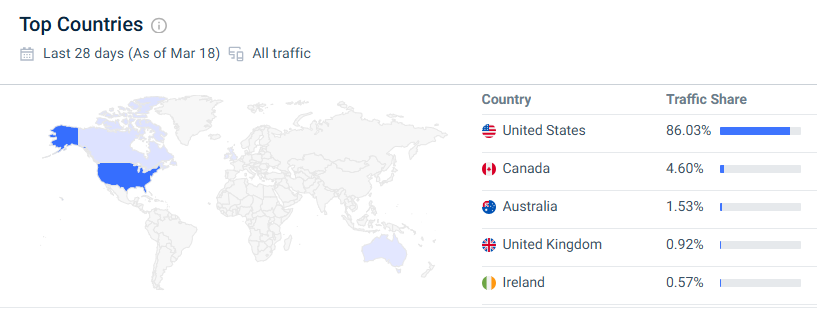
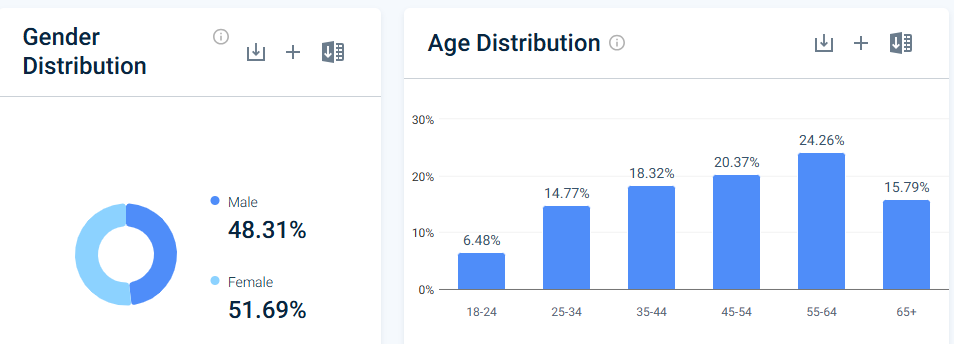
Journalistic Content
While following a logical structure of providing first-hand accounts from doctors, official statements, and contextual information, this article lacks headings to guide the readers. The inclusion of direct quotes adds emotional depth and authenticity to the reporting.

However, the author has strategically embedded hyperlinks to key terms guiding it as a potential subheading for the readers to follow, thereby offering a logical flow of opinion. The article has visually embedded after each 2-3 short paragraphs, thereby redirecting the readers towards content and providing them a visual remembrance of what has been covered (Coleman & Wasike, 2004).
Hypertextuality
Compared to BBC, what makes this story better is, Huffpost not only quotes numerous medical professionals, but also gives statistical evidences, apart from hyperlinks of all the related content embedded to help the readers understand the sources and maintain transparency and authenticity of the article (Son, 2020).
Multimedia
At the beginning of the article, the author has attached an image of a wounded baby to emphasise the intensity of the conflict between Israel and Gaza. The wounds have a visual and emotional impact on the readers.

The author has ensured to engage with photos throughout out the article to show the severity of the war and its deeper impact on people and medical professionals. The use of graphic images draws to the intensity of the issue with extensive captions to engage the readers for longer time and show the gravity of the situation ( Ibarra et al., 2024).
Online Delivery
HuffPost has a comment section with over 490+ comments in the article to increase interactivity between readers and journalists.
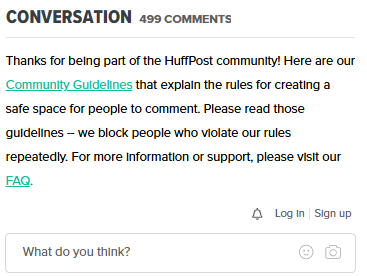
There is an embedded link in the author’s name to allow readers to read other articles of the author, with email and Twitter details to engage with her.

The story can be saved and shared on social media platforms like Facebook and through email as well. There are embedded videos in the article as well.
Technical Delivery
The webpage has both vertical and horizontal navigation, like BBC, but it lacks a “Search” option, which adds to the complexity of searching for an article. However, the responsive designs make it compatible with devices, and the loading time of the article is optimised with links to various recommended articles at the end of the page.
Conclusion
If the reader is seeking a humanised perspective on a serious issue of conflict, experiences from HuffPost are compelling, whilst readers seeking more neutral and factual analysis will prefer BBC. However, comparing the aspect of writing and content production, a news story from HuffPost is more effective as it offers more credible information with embedded sources and perspectives, exhibiting more journalistic and narrative effort.
References:
- Bradshaw, P., & Rohumaa, L. (2017). The online journalism handbook: Skills to survive and thrive in the digital age.Taylor & Francis Group.
- Coleman, R., & Wasike, B. (2004). Visual Elements in Public Journalism Newspapers in an Election: A Content Analysis of the Photographs and Graphics in Campaign 2000. Journal of Communication, 54(3), 456–473. https://doi.org/10.1111/j.1460-2466.2004.tb02639.x
- Ibarra, G. R., Jonathan, Mariska Kleemans, & Fransen, M. (2024). Picturing Tragedy: A Content Analysis of the Publication of Graphic Images in Newspapers. Mass Communication and Society, 1–29. https://doi.org/10.1080/15205436.2023.2297078
- Rosenblatt, A. (2020). Two-Way Communication Is The New Journalism. Medium. https://medium.com/@arosenblatt21/two-way-communication-is-the-new-journalism-1e4962b10c22
- SimilarWeb. (2025). Demographics- Huffpost. Similarweb. https://pro.similarweb.com/#/digitalsuite/websiteanalysis/audience-demographics/
- Son, J. (2020). ONLINE Journalism and Storytelling A Training and Learning Kit. In ccimcambodia.org. https://ccimcambodia.org/wp-content/uploads/2020/08/Online-Journalism-Book-Fojo-for-Upload-Web.pdf
- UNC. (2020). Case Study: Huffington Post. Www.cislm.org. https://www.cislm.org/case-study-huffington-post/

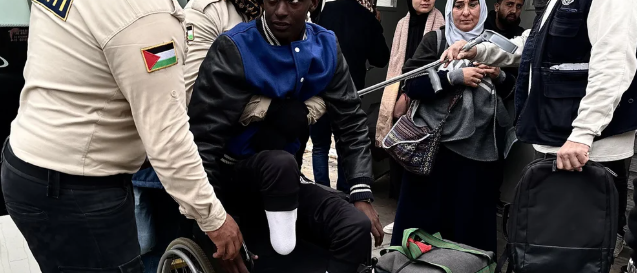





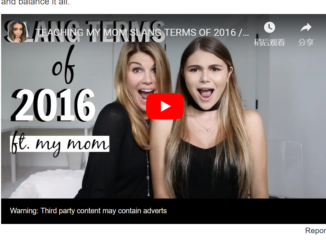


Be the first to comment